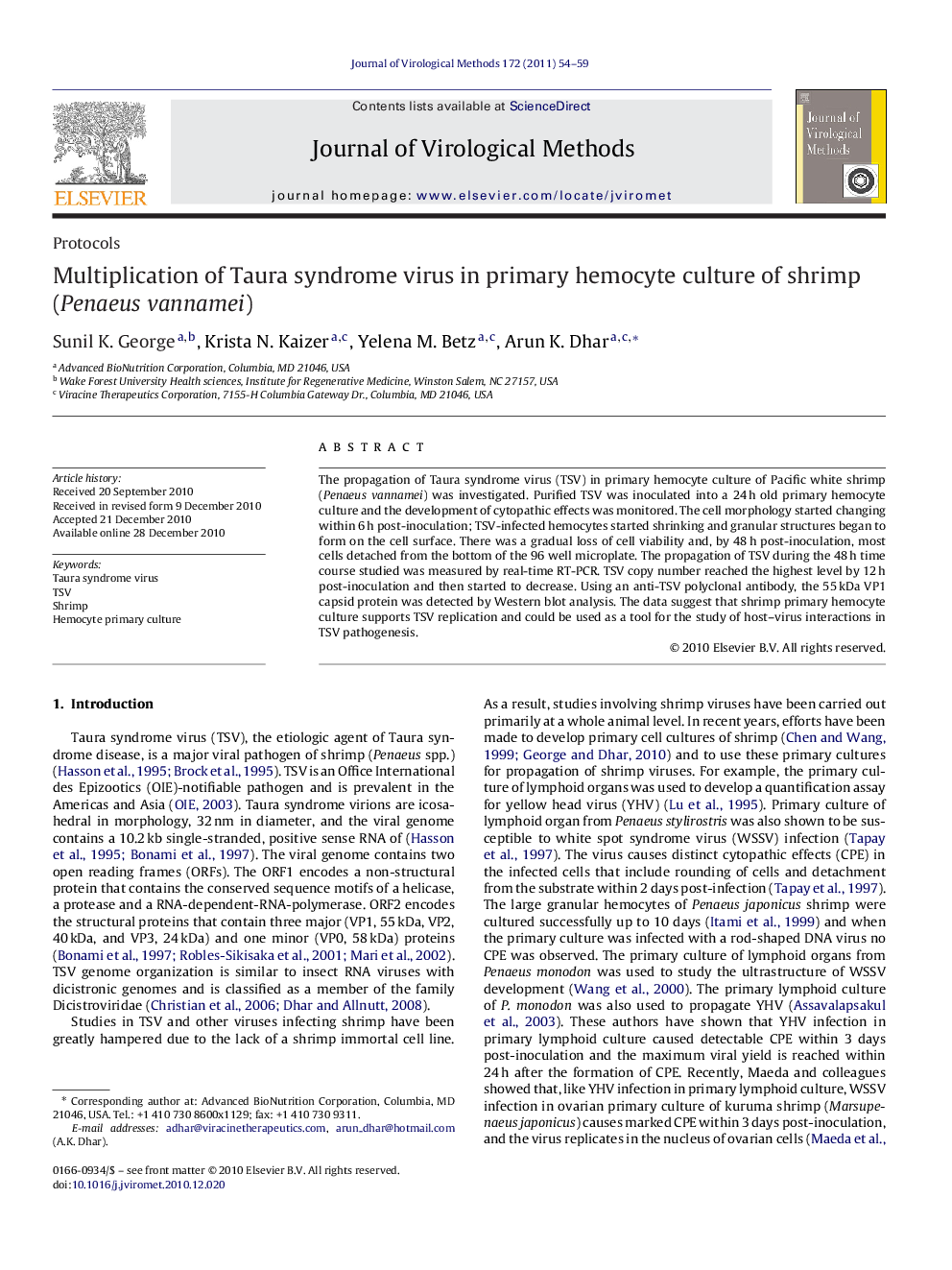| Article ID | Journal | Published Year | Pages | File Type |
|---|---|---|---|---|
| 3406994 | Journal of Virological Methods | 2011 | 6 Pages |
The propagation of Taura syndrome virus (TSV) in primary hemocyte culture of Pacific white shrimp (Penaeus vannamei) was investigated. Purified TSV was inoculated into a 24 h old primary hemocyte culture and the development of cytopathic effects was monitored. The cell morphology started changing within 6 h post-inoculation; TSV-infected hemocytes started shrinking and granular structures began to form on the cell surface. There was a gradual loss of cell viability and, by 48 h post-inoculation, most cells detached from the bottom of the 96 well microplate. The propagation of TSV during the 48 h time course studied was measured by real-time RT-PCR. TSV copy number reached the highest level by 12 h post-inoculation and then started to decrease. Using an anti-TSV polyclonal antibody, the 55 kDa VP1 capsid protein was detected by Western blot analysis. The data suggest that shrimp primary hemocyte culture supports TSV replication and could be used as a tool for the study of host–virus interactions in TSV pathogenesis.
